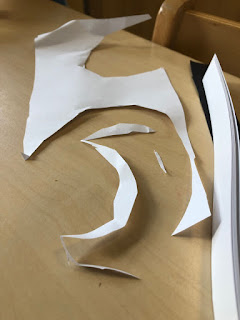AGENCY AS LISTENING

Last week, I found myself pulled into an online conversation about agency. The thread contained of fascinating comments, poignant questions and wonderings and yet it kept me with a slight sense of discomfort. Tension is always a good thing so I am trying to get my head around what it is creating this ‘cognitive conflict’. What is it about this conversation that does not sit well with me?
Perhaps the first thing that comes to my mind is the fact that I found it hard to engage with the questions after having spent the day with a group of 5-year-old students. Somehow, I did not have the thinking power to reflect and consider thoughtful responses to the comments and questions people were willing to offer. Being back in the classroom has re-connected me with the joy of working alongside children and families. Teaching is a beautiful profession; highly engaging, deeply satisfying and intellectually challenging. It makes me realize that we need to be mindful of when and how we ask these important questions so teaching teams can co-construct meaning over time.
Agency is a multifaceted concept. Like inquiry, it will require time, reflection and collaboration to deepen understanding of what it could look like in practice. Over time, we will realize that we will always continue to expand our understandings and that our practice will always be evolving. Perhaps this is where most of my discomfort comes from, there seems to be such a rush to ‘implement agency’ and I am afraid we will end up in a place where we find quick solutions to closed answers and narrow definitions.
In my last blog post my question revolved around the idea of proxy agency. To think deeply about agency, we need to start with examining the ideas we hold about children’s rights and identities. There are many cultural, historical, political and individual forces that impact on ‘our image of the child’. If we don’t consider the ideas that shape the decisions we make for children in our schools, we will never be able to create a learning environment where students can participate authentically and where they experience true ownership over their learning.
When we think about the child as a competent learner and bearer of rights, our role as adults will shift. We start with listening to children’s voices, opinions, wonderings and questions expressed in different ways. Last Monday one of the children asked me “Anne, how do you make a ball out of paper?”. I reoffered this question to the group and a small group of children was interested in taking up this challenge. We quickly went from a solid ball of paper to spheres made from strips of paper. Some of the children had previously created strings of paper stuck together by glue so one child discovered the possibility of creating the shape by using the strips of paper to define the shape.

The exploration seemed to be about the properties of paper, shapes and movement and has brought me to a different space of research and wonder. I am thinking about ‘where to from here’. What question or problem can I pose? What honours the children’s ability to research and construct meaning? There are multiple pathways and possibilities that can be explored. I think I may start with offering some of the documentation back to the group and see if they want to continue making spheres (and movement) or start exploring spirals.

I wonder:
What is the image of the child in your school?
How does the idea of the child as a competent learner/meaning maker shift the role of the teacher in inquiry based learning environments?
If we acknowledge the right of the child to be consulted in decisions that affect them, then how do we involve students in decision making processes?
Anne






Comments
Post a Comment